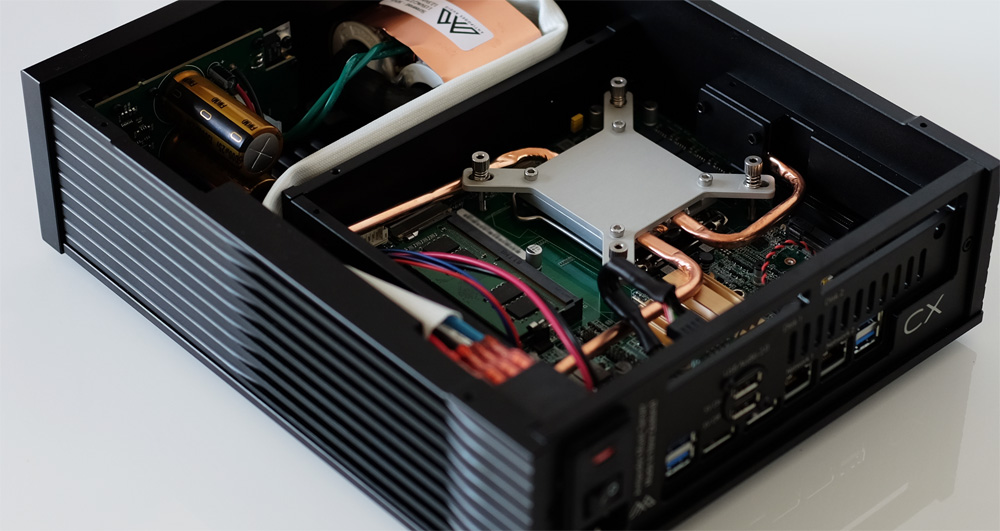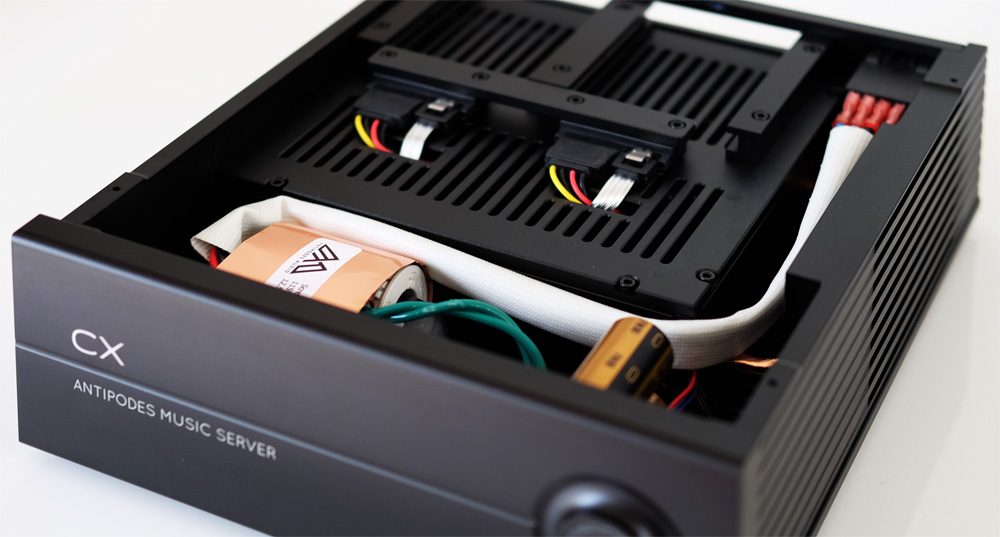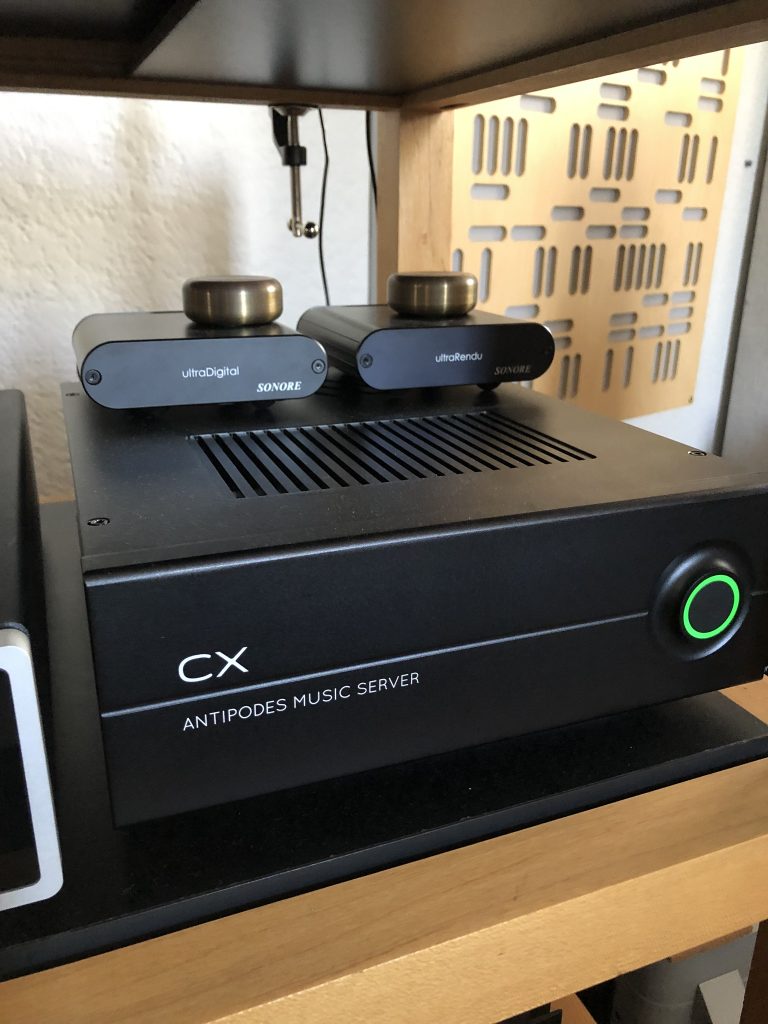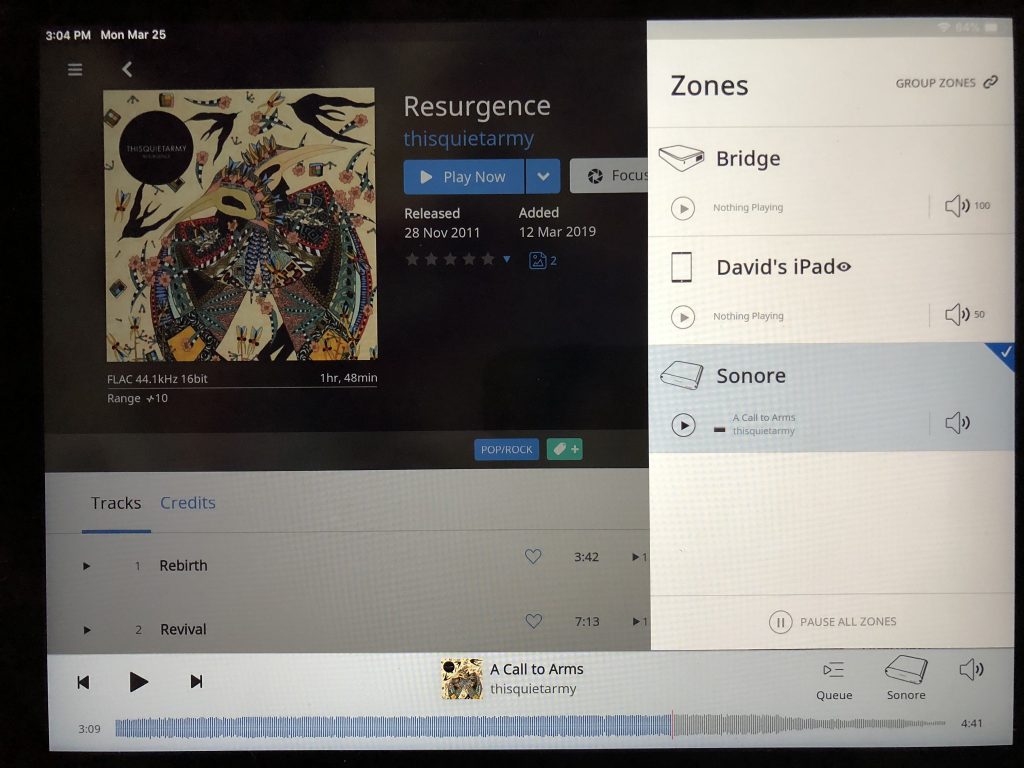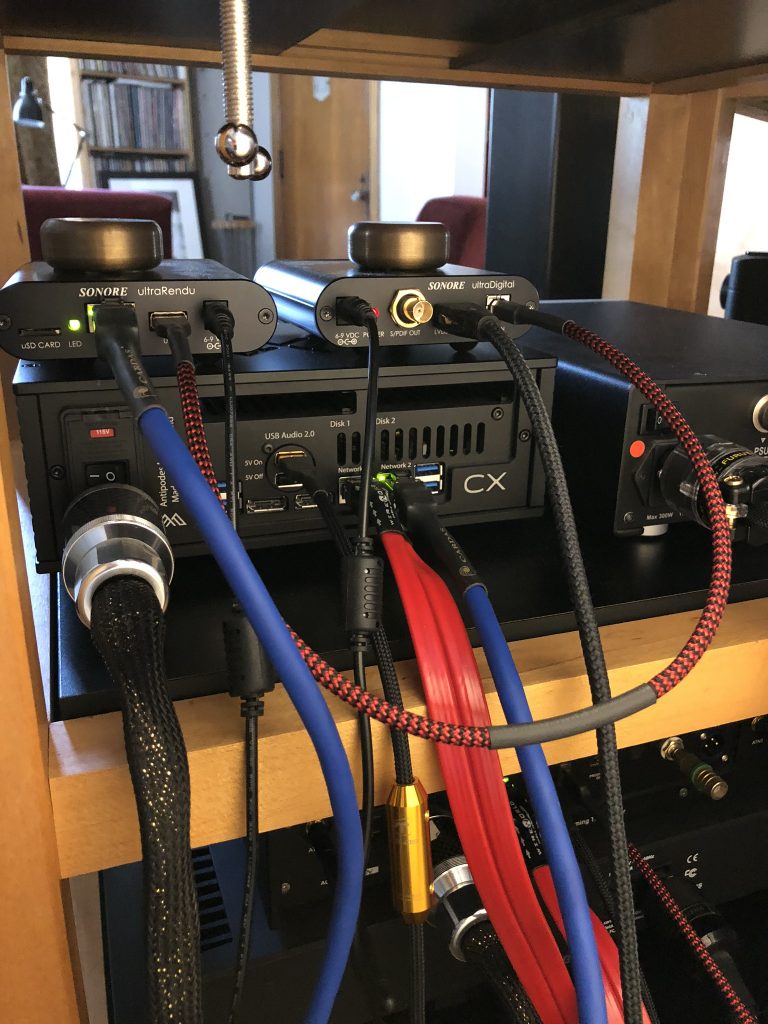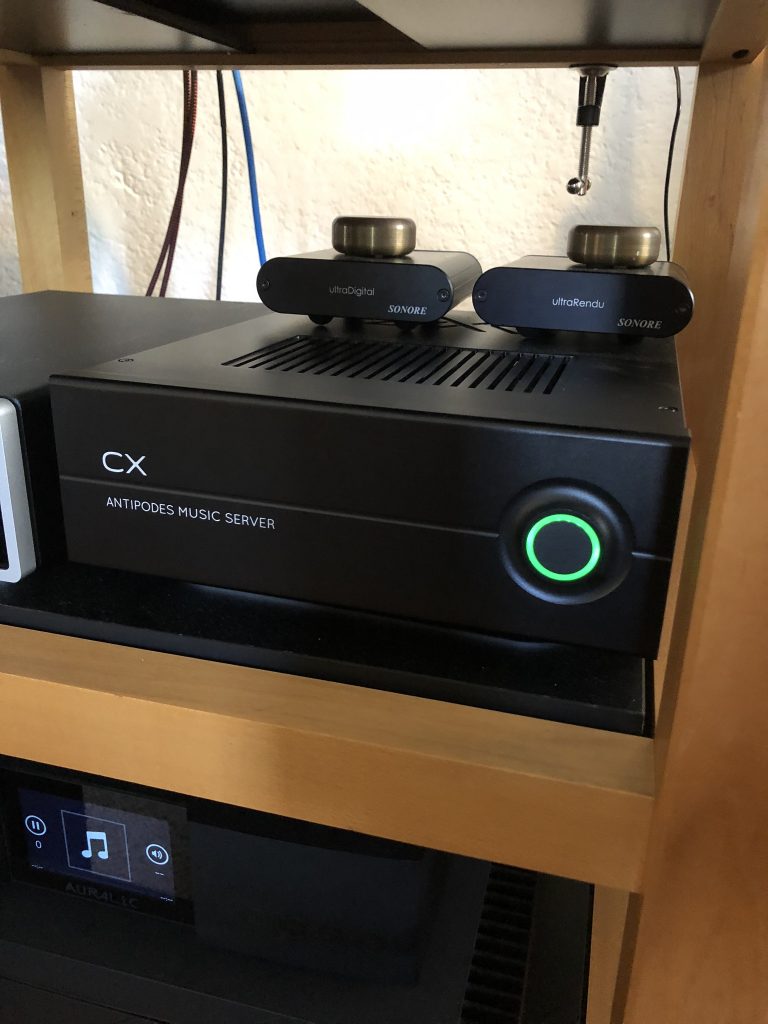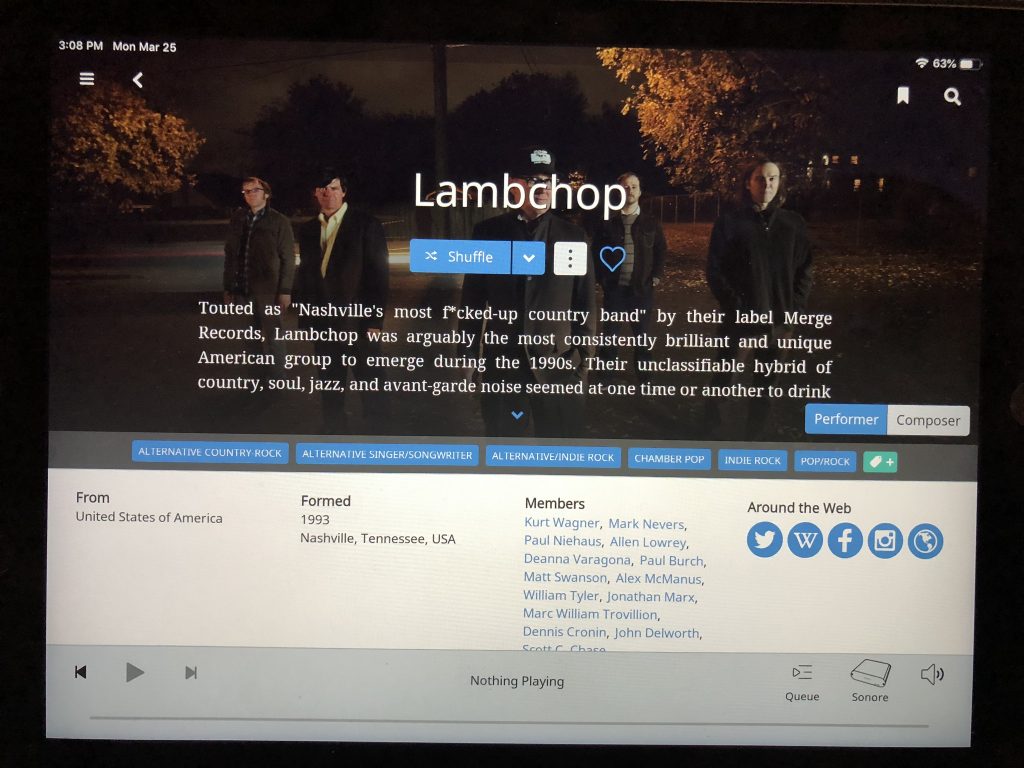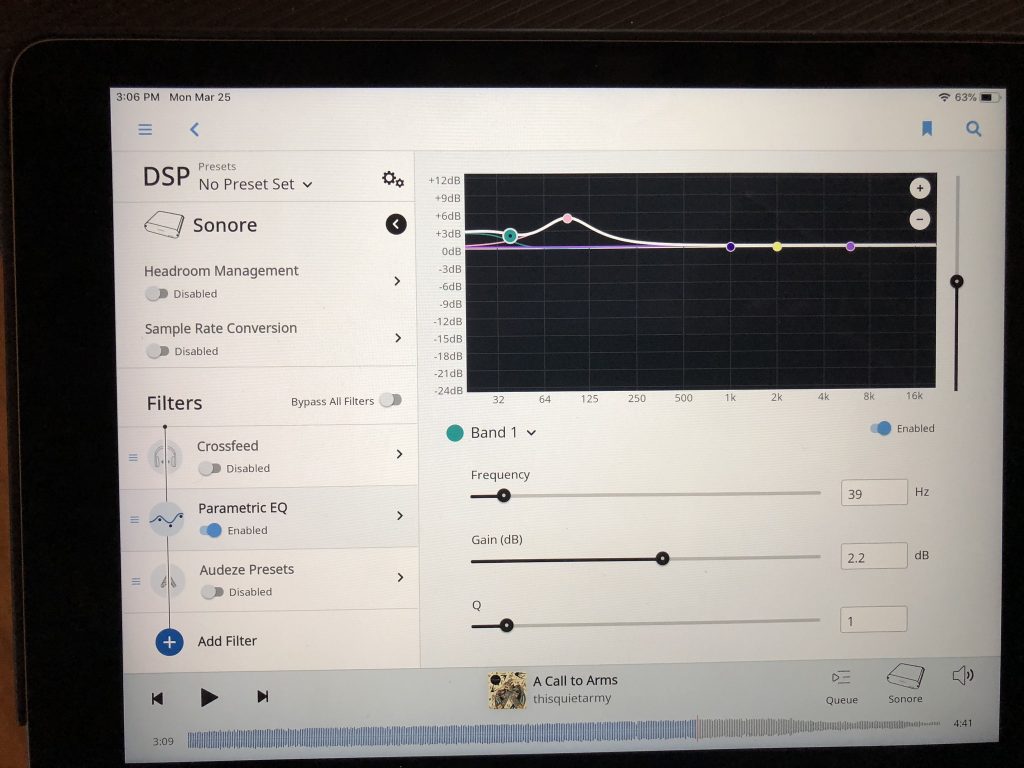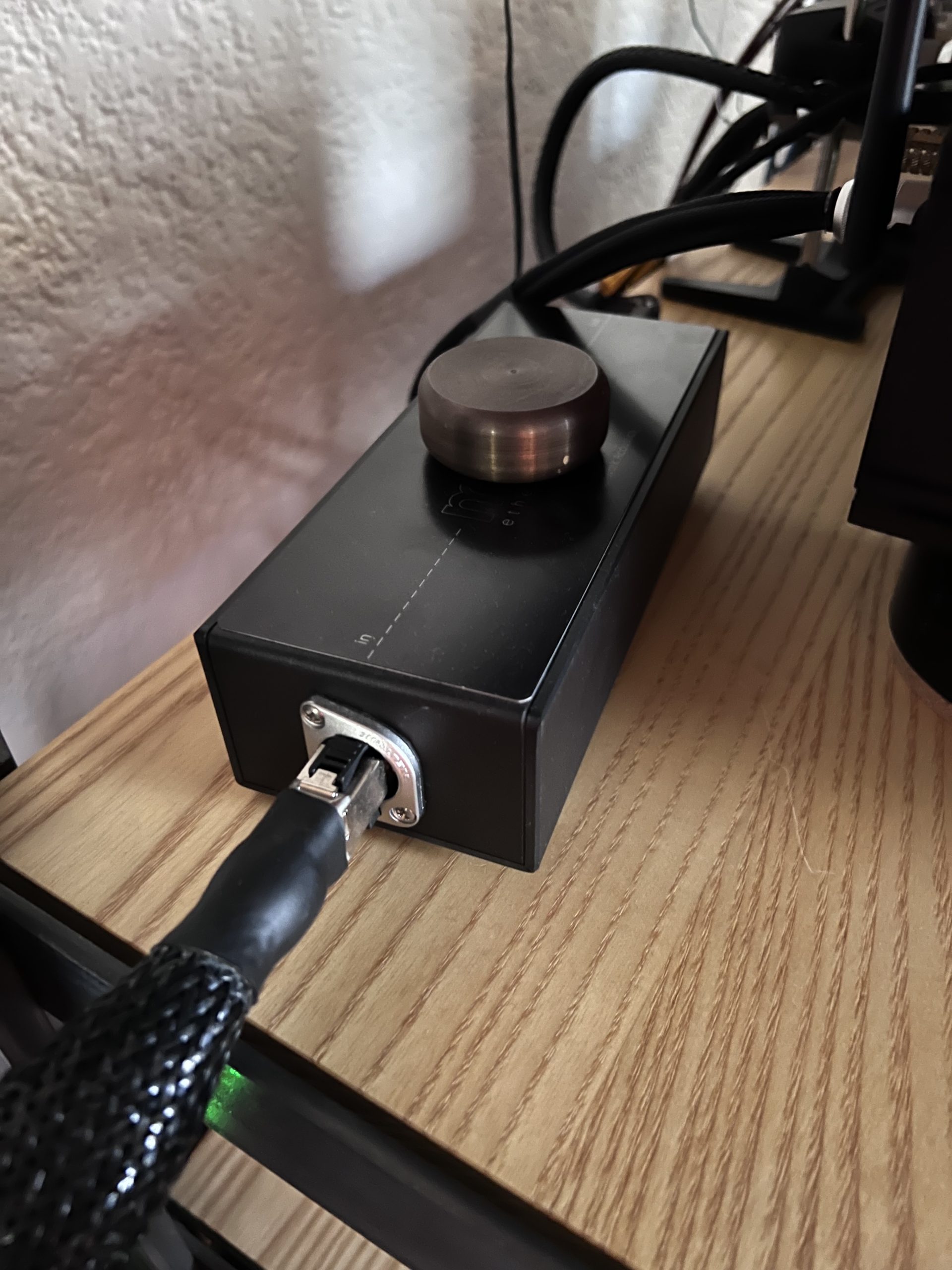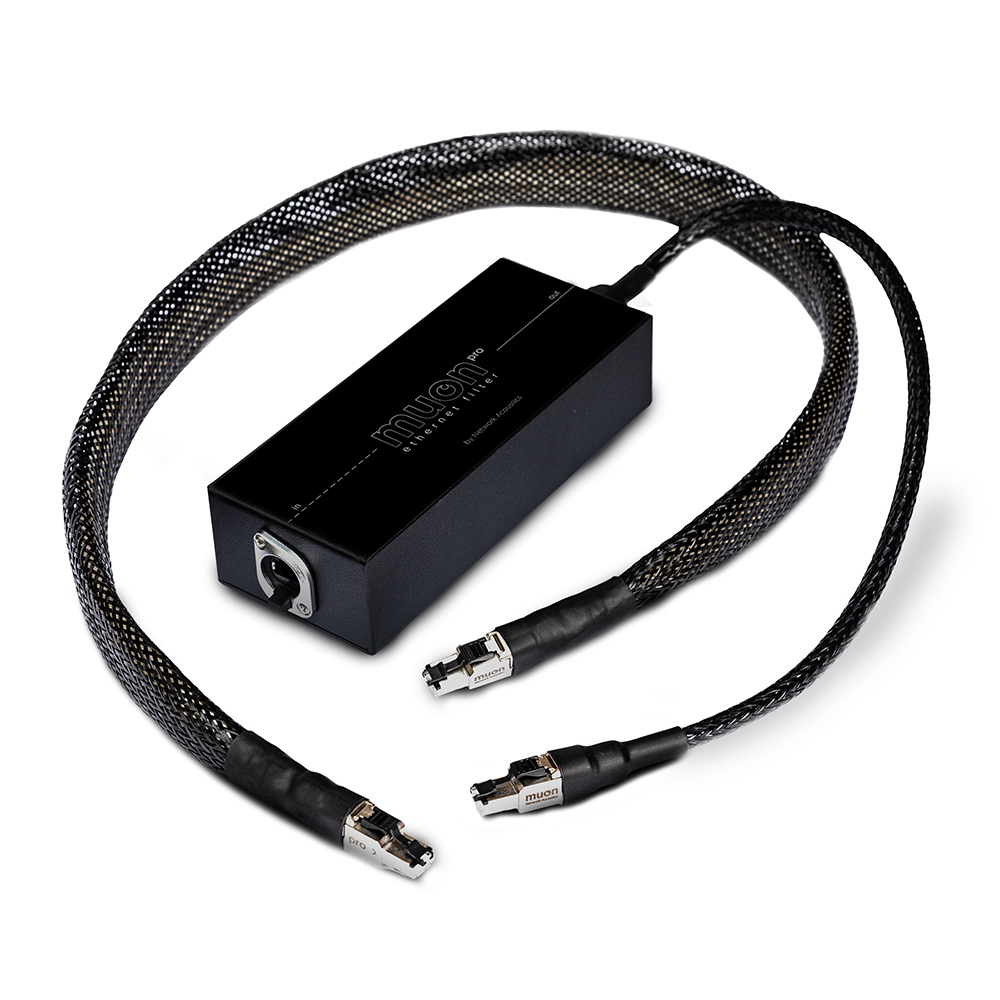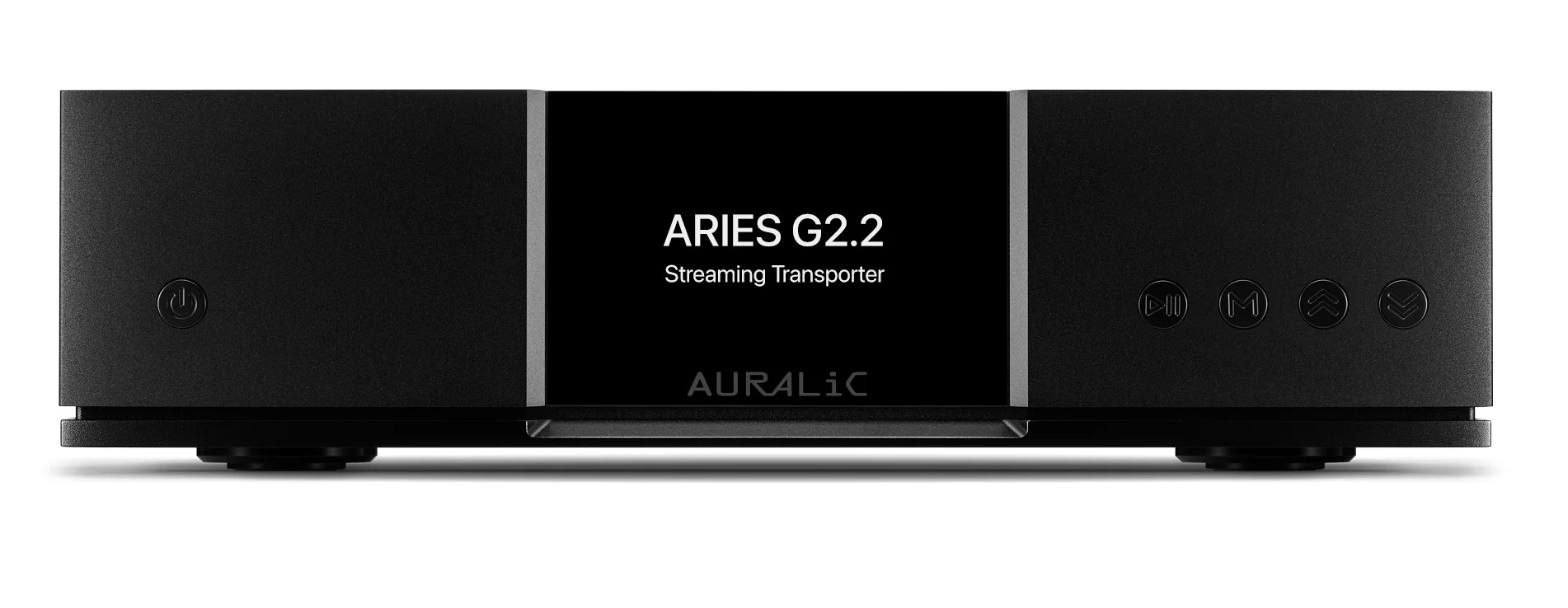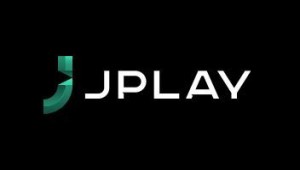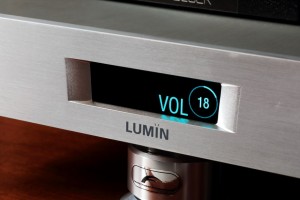Getting music from A to B is still the hot thing with more and more renderer/server/streaming devices coming out from every nook and cranny. While there continues to be offerings from such companies as AURALiC, Aurender, and so on—running their own proprietary software—there are those from the likes of Antipodes, Wolf, Roon, Small Green Computer, and so on, running someone else's software, such as, well… Roon.
A few years back I wrote about my experiences with the Antipodes Edge and Core combo, which run Roon though other software options available, and ended up keeping the two units as a reference for such things—like Roon. The combo served as an excellent option to my AURALiC G2, offering equal performance, though with a slightly different musical perspective. Perhaps more analytical with a stronger sense of neutrality, if you pushed the point of, "hey, so how are they different?" Of course, is this a result of the unit's construction, choice of parts, execution of the same… or the software being used? Am thinking less of the former and more of the latter. Software makes a difference as it's coded to influence (address) certain things differently; like jitter, distortion, the degree of being "bit-perfect," and so on. So yeah, the Antipodes units running Roon sounded different than the other devices here that ran their own software. Neither better than the other, just different. Think taste or preference. Different music, system, and so on would—might—lead one to prefer one over the other. Or want both!
Fast forward to a few months ago, and in comes the replacement for Antipodes' Core, the all new CX (which acts as both a renderer and server). And I mean all new; new casework, new board, new power supply… which was a bit of a surprise. I mean, the Core was, and is, great, but then it disappears, and out of nowhere comes the replacement CX. What gives? What happened? A completely different box, look, etc. So, I asked Mark Jenkins of Antipodes what was the impetus to dump the Core/Edge and come out with the new EX/CX replacements. Here are his comments:
With the CORE and the EDGE, we were trying to get a very high bang for the buck set of products to market. As usual this means making compromises rather than making what we would prefer to make. There were three key areas where we made compromises in order to get them to market at the desired price points.
We used a relatively inexpensive but good sounding CPU, and we used it in its native setup, which is not true of the CX.
We used a case made in large quantity at a low price. Actually, the case was custom machined to our needs, but from a raw case made in large quantities.
We used a mid-level quality external power supply – using good design but with inexpensive parts.
What went spectacularly wrong was that the supplier of the cases decide to cease producing these units due to production issues.
This experience came on top of another long-time supplier unable to meet our needs, so this led me to make a decision.
We would bring all aspects of design in-house, to design quality in from the start, and give us the flexibility to manufacture in-house, or out-source manufacture if and when we pleased. We had previously made the mistake of out-sourcing some of the design, which meant that changing supplier was too difficult when the supplier was unable to meet our needs.
We would cease making compromises to hit price points. All design and manufacture are now focused on excellent execution to the relevant product concept.
In fact, this is how we had always approached the DX, where most of our sales have always been. What we needed to do was simply apply the same approach to the small form factor products in our line-up, and stop compromising this approach to hit price points.
The transition was not without hiccups, as some third-party arrangements took a lot longer to ‘exit' than we had hoped, and this added some tricky problems to the launch of the CX and EX. We are still distracted, to some extent, by the complexity of the transition. We are in a much better place now, the products are much better, but the prices are also higher. Our new approach came with an acceptance that we will no longer target-price. The prices will reflect the cost of doing things the right way, and we will let the market decide whether the prices are acceptable. We are also a lot of happier approaching things this way.
In essence, the CX replaced the CORE, and the EX replaced the EDGE. But in applying excellent execution to all aspects of design and manufacture of the CX and EX, we ended up in a situation where the EX sounds better than the DX, and the CX sounds even better, and the CX+EX sounded spectacularly better. As a result, we withdrew our flagship DX.
There is nothing in the CX that is shared with the CORE, and nothing in the EX that is shared with the EDGE. The only thing that is similar is that the motherboards in the CX and in the CORE are based on the same motherboard – but they perform at different levels because there has been a lot more optimization work done on the setup and tuning of the board in the CX.
The two biggest differences are the power transformer and the power supply rectification/regulation. It is strange to us to see chat site level discussions that seem to think one linear power supply is much like another linear power supply, because nothing could be further from the truth. I appreciate that people (particularly marketers) want to put labels on things and then state something with one label on it is better than something with another label on it. But this is an illusion. Nearly any technology is capable of beating any other technology if enough skill and money is applied to it. But what is true is that certain technologies can be made to sound spectacularly good for reasonable cost, and that is where the skills of an audio product designer are focused.
The tendency to want to evaluate products on what labels are attached to it can drive design. You see this everywhere – DACs competing on what bit-rate or stream format they can handle, as if this transcends the quality of the design. Format wars plague the server market too, and people get fixated on issues like clocks, CPU clock rates, RAM capacity etc, and all we can do is shake our heads. A good sounding server is not defined by these things. They are simply part of the mix of choices of where and how to apply your money to provide an optimal product.
But I digress.
The difference between the CORE and the CX is better described by our complete change of philosophy for the small form factor products in our line-up, rather than a laundry-list of parts changes, chip tuning changes, and technology changes.
We now approach the CX and EX the same way that we approached our DX. But, for Antipodes, the change is more profound than that. We used to design iterations of the DX and then figure out how to cut corners to bring as much of that sound down to the small form factor units.
We are now doing the complete opposite. We have approached the CX and EX focused on excellence within a form factor that drives you towards simplicity. As good as the CX and EX are, our next step is to address full-width units that learn from and improve in various ways on the CX and EX.
And here we have the new CX up and running, all rather painlessly with nary a hiccup. Plug it in, connect it to the network via one of its two Ethernet ports for your NAS (though you can use the CX with an internal drive of your choice to house your music), connect it to a DAC via USB or via the second Ethernet port if your DAC is Ethernet ready (my PS Audio DirectStream DAC has the Bridge II option, so I was able to do so), turn it on, and then let Roon do its thing (Roon is quite easy to set up, though its options in terms of DSP and other features are quite extensive—more on this later). After Roon loaded my files (20 mins or so), I had the audio zones identified and selected (like 2 mins), music was playing all quite satisfactorily. What is cool is that you can run all the zones at one time making switching, or getting music out to wherever, as easy as pie.
As to how it betters sonically or musically to the older and defunct Core, no idea. The Core's drive went south and it had been returned for repair prior to the CX arriving. Since the CX was a "replacement," of sorts, for the Core, the Core was not to return to me after repairs, so no way to say that all that Mark mentions above means what to what. But I cannot imagine how any of the improvements and changes he made would not be better. Better power is better, better (faster) processing is better, lower noise is better, cleaner is better… so the CX should be better than the Core. No doubt it is. From my review of the CORE/EDGE (HERE), think custom built race cars… everything being chosen, designed, configured, optimized, and built with one goal in mind… unbridled performance. Which is exactly what Mark says above in how the CX and EX came about.
As I mentioned, with the CX I had the options of going to the PS Audio DAC via Ethernet or USB. While I initially tried USB, and will say it sounded very damn good thank-you, using the CX with USB was not really where I wanted to go. Owning the AURALiC Aries G2, which has several digital outs (S/PDIF, AES/EBU, optical, and USB), USB out is by far my preference. But the issue is, the PS Audio DS DAC only has one USB in and the AURALiC Aries G2 does not like being hot-swapped via any digital out, so I pretty much need to leave it as it is—sigh. As such, the EX was set up to go out to my PS Audio DS DAC via several configurations: USB out to the DAC, USB out to the Sonore ultraDigitalUSB to S/PDIF, and LVDS i2s converter's HDMI out to the HDMI input on the PS Audio DS DAC, or, either Ethernet direct or Ethernet out through the network switch, to the Sonore ultraRendu Cable Ethernet input with its USB audio output to the USB input on the Sonore ultraDigitalUSB to S/PDIF and LVDS i2s converter and then out via HDMI to the PS Audio DAC's HDMI input, or simply direct Ethernet out to the PS Audio DS DAC's Bridge II. (read more about the Sonore products HERE in the context of their use with the Small Green Computer i5).
Alright… so after we let that sink in and the confusion slowly washes away, or not, you are no doubt asking yourself, "Why did you do all that again?" Well as I said, I wanted to avoid USB out since comparing the Aries G2 to the CX with USB would be a real PITA, so how could I use the CX without needing to turn the Aries G2 off and on after needing to swap USB cables? Not good for the Aries G2 and certainly not good for me either. Really not into swapping things back and forth anyhow… after all these years, uh, no thanks. Put it in and let it play. In other words, let's find the best option that works, that sounds the best, and that makes sense in terms of long-term. I own the Aries G2 and the Core that the CX is here to replace, and so yeah, I am thinking long term. And, Antipodes suggests with no lack of confidence, that as good as the CX is with one's music, using it with the EX where the EX acts as the renderer and the CX acts as the server is the best thing ever... allowing each to do its own thing. Ah, but I do not have the EX here, though I do have the Sonore ultraRendu here, which is a renderer. Perhaps not as good as the several times more expensive CX, but I like what it did with the Small Green Computer's i5 (HERE), so can it do its magic with the CX?
Hell yeah.
(As a side note, for digital outs, the CX only offers two USB Audio 2.0 ports that are either 5v on or 5v off and the direct Ethernet out. The USB ports are clearly marked USB Audio 2.0 right smack in the center of the CX's rear panel. Don't use the other USB ports, they are for drives and will not sound all that great for audio. The fact that that is all that is offered, pretty tells you all you need to know about how Mark thinks in terms of what is the best way to send a signal to a DAC. Or am I just assuming too much? Another option is to use it with products like those from Sonore if you need something different.)
So here we go… starting with the most obvious connection of the CX in a system... USB.
Option 1
The CX USB out to the PS Audio DS DAC. Am thinking that this is the most popular and likely use of the CX since most DACs offer a USB input now days (seriously who does not?) Of course USB still has its critics as being problematic and difficult to pull-off without any issues—and even then there might be issues—and so here we go. Music sounded really, really good via USB. Of course one can "tailor" the sound with various USB cables to their liking, and with the option of having USB cables from PAD, WyWires, Skogrand, Sablon, Black Cat, Cardas, Nordost, and others... I was able to hone that down to being pretty much whatever I wanted. Of course one is not only listening to the CX, but the CX via a USB cable to a DAC and its USB implementation as well (the PS Audio DS DAC is as good as I have heard via USB). Even so, this option was solid and should not cause anyone to run away from sitting down and spending quality hours listening to their music. I know I did. Clean and articulate. Solid bass and a wonderful engagement with the music. Drive and pace. Clean and articulate. No grain or grit... sweet. Nice. Really nice. An easy and obvious way to go and one that would serve anyone long-term happiness with their files.
Option 2
The CX via Ethernet out to network switch to the PS Audio DS Ethernet in (Bridge II) using Cardas Clear and Wireworld Starlight Ethernet cables resulted in a more relaxed sound. Not sure why anyone would use this option since the CX has two Ethernet ports; one for connecting to the network (NAS, router, etc.) and a second one to connect direct to a network DAC. So, why not give it a shot? Well, this option was one that fell more "away" from resolving all the little things, and towards one where the overall presentation was the emphasis. Sit back and relax. Easy and full. Rich and perhaps a bit more euphonic than via USB. Still clean and resolving, just not as much so—at least not as readily so. The little things were still there, they were just not so easily discerned… or emphasized. But if one listened one could find them, they were all there. Coloration from the network? More cables in the mix? Noise acting as a mask of sorts? Not sure. Not sure I care, as I could live with this quite happily, but now there was more richness and color. Less contrast for sure, but yeah, this was interesting. Carol also found this to be not as bright for her—or simply better. So I am thinking that the Ethernet connection via the Bridge is perhaps the way to go then? Very musical and very long-term listening pleasure. But...
Option 3
The CX via Ethernet direct out to a networkable DAC, in my case the PS Audio DS Ethernet in (Bridge II) using either Cardas Clear, Wireworld Starlight, or the cable supplied with the CX (an Antipodes Special) Ethernet cables resulted in very revealing sound. A bit leaner and ever so slightly less engaging in terms of overall richness compared to my favorite option (see below). In this configuration, think "nothing" is in the way. Start with a digital pathway (Ethernet) minus any issues that USB or whatever else one has that could get in the way—assuming there might be, which there might be or might not be—with your music. That is, nothing to add to the music, or to take away from… other than the cable(s) in use. Ethernet straight out and straight in. Overall, I preferred the Cardas, as it offered a bit more oomph to the music. The Wireworld was a close second in terms of being nearly as warm and rich as the Cardas. The supplied Antipodes Special came across as more "neutral" in that the other two could have been adding some coloration to the music; of which I am fine with this addition. This rocked and I could live with this quite happily, though overall, I found the sound to be a wee bit lean through the upper bass and lower mids than I prefer, or want to hear. A bit more this and that with there being a bit too much this or that. I need a wee more oomph and richness… more color please (coloration?). Too revealing? Too clean and articulate? Too much resolution? Maybe. Perhaps. But isn't that what we are all after? Clean and direct. Nothing to muck with the sound? Nothing to get in the way? I dunno if that is for me anymore. I am old and am thinking I need more of what we don't want and not less of what we do. Carol also found this to be a bit too bright for her. But this was as "pure" as I have ever heard here... ever, but then as I noted above with the USB option, how much can be attributed to the PS Audio DS DAC's Ethernet Bridge II option? How does it "treat" the digital signal differently than the USB input, or that of the HDMI? Are they equal, or is one or the others given, not a preference per se, but is done better in a sense or whatever over the others? Well, this rocked, and for sure, as I mentioned, using different Ethernet cables allowed me to tailor the sound to some degree. Nice. Really nice. This is heading in the right direction for sure and I could live with this long-term. Way cool. Way good.
Option 4
The CX USB out to the Sonore ultraDigitalUSB to S/PDIF and LVDS i2s converter's HDMI out to the HDMI input on the PS Audio DS DAC. More like the Ethernet direct than not direct, but slightly different for sure. This was good, but it seemed to lack something. Perhaps not as musical overall in some respects as heard from Options 1 and especially 3. I wanted to try this as it allowed me to use the HDMI and avoid USB (again thinking long-term here and the Aries G2 was already claiming USB for the foreseeable future). It was clean and articulate, but lacking in that overall richness and, I dunno… less engagement in some sense? Less comfort? I can see why people would go nuts over this; resolution up the ladder, but overall it was tonally a bit lean for me. Just not happening to the degree of Options 1 and 3 above, and even Option 2 with its coloration. I suppose over time I would get used to it, we all do with whatever we listen to long enough… over time. It becomes our norm, our reference. It is what we are used to hearing and as such judge or reference everything else we hear. I dunno. The music rocked and yeah… was way cool, but not sure if this is what I am after long term, even if I would get used to it! Maybe it is an issue of the HDMI cable I was using—Audioquest Carbon. Perhaps not the cable for me and my music? Solid cable from a great company, but who knows? Could be. Might be. All I have. Carol also found this to be a bit too bright for her. Lots going on, but was something missing? Then again, this was damn good on certain titles... titles that are really well recorded and produced. But again, we are now comparing the HDMI input on the PS Audio DS DAC to the USB and the Bridge II inputs. Differences in inputs? For sure. I mean, why would these not have a different sound? Is the HDMI the least colored of the DS DAC's inputs? The cleanest and whatever compared to the others? Maybe. Could be. Seems to be. Or perhaps it is just me and how I am responding to how they do what they do. Even so, yeah... solid and it works. Actually, the more I think and listen, the more I really like this... fast and dynamic. Clean and way mean, but not over the top. But if only we could get some of what I loved with Option 3 with what I hear here with Option 4. Yeah, that would be the magic!
Option 5
The CX Ethernet out through the network switch to the Sonore ultraRendu Cable Ethernet input with its USB audio output to the USB input on the Sonore ultraDigitalUSB to S/PDIF and LVDS i2s converter and then out via HDMI to the PS Audio DAC's HDMI input, or simply direct Ethernet out to the PS Audio DS DAC's Bridge II. Oh my… now we are talking. I liked this a whole lot. More of what I want to hear in my music. And a whole lot more space and layering. But then why go this route with the CX having its own direct out via Ethernet? Sort of mucking things up by adding in the unnecessary pathway through the network. But still, we were getting a lot of what I heard in Option 2 but times .2607. No, make that if we were to combine all the benefits of Options 1, 3, and 4 together, plus way more, but in some respects a bit less than heard in Option 3.
The CX is now acting as the server while passing the rendering part onto something else, and man did this really open things up! Quite literally compared to the other options above. But it was also adding the network into the equation where there is simply more in the way regardless how good the AQVOX switch is—am thinking no switch is better than a switch. Even so, this configuration really got me sitting up and listening. Layers, space, richness, bass extension... getting it all. Very palpable and dimensional. Way more engagement and yet… could we get the best of this with a wee bit more there thereness? A bit more stuff in the music? More bits and the like? Could I get what I heard with the direct Ethernet out combined with the benefits of the Sonore ultraRendu as a renderer and the way resolving Sonore ultraDigital for the HDMI input? So let's try this... (after all, as in Option 2, why go this route when you have the Ethernet direct option?)
Option 6
Oh yeah, here we go, this is the Golden Ticket: the CX Ethernet direct to the Sonore ultraRendu Cable Ethernet input with its USB audio output to the USB input on the Sonore ultraDigitalUSB to S/PDIF and LVDS i2s converter and then out via HDMI to the PS Audio DAC's HDMI input. Oh man! Now we are cooking. This was what I was after. The benefits of direct Ethernet out combined with the rendering of the ultraRendu and the resolution of the HDMI via the Sonore ultraDigitalUSB. All clean, all resolving, all engaging… and oh so musically rich. Bass and slam. Dynamics. Layers and layers. Space and depth. Wide and big… now I had it all. Texture and palpable presence. Immersion. All encompassing. All that I wanted from my music, from my system, from my room… what I wanted to hear and how I wanted to hear it. And yeah, Carol liked it too. Now we had it all. This configuration was stellar. Of course, it could be even more stellar with the Antipodes EX, but that is another story... another time and another Ramblings. Maybe. Maybe not.
Even so, when I listen to my music where we use the CX's Ethernet direct to the Sonore ultraRendu then USB output to the Sonore ultraDigital out HDMI to the PS Audio DAC's HDMI input… wow! Simply stellar in every way I can think of. Yeah, Option 5 is quite good, but man did Option 6 work for us here. BTW, the two Sonore products will run you $895 for the ultraRendu, $325 for the ultraDigital, and a $159 for each of the supplied LPS. Add in additional power cords, Ethernet and USB cables, and there you go.
Of course, there is a substantial caveat with what I have written above with respect to Options 1 and 3, and perhaps to some degree, even Option 4… in terms of what I had heard with the different configurations. The worse the recording, the bigger the differences were heard, but the better the recording the less the differences were heard. In other words, the worst brings out the biggest, but the best is more equally presented. Still somewhat different, but really not much to wag your finger at… with my music that is well done, any of the above would suffice long term, but for sure Option 6 really shined. Meaning going USB, Ethernet direct, or using the HDMI will all get you there musically. Our music as heard (experienced) from the CX with any of these 3 configurations was simple stellar... where any differences were more an issue of shadings or slights than anything else. And it is really all about preferences and working with what you got.
The CX sounds really good via USB and via Ethernet direct, but it clearly sounds different than the AURALiC Aries G2. For sure different construction, design, parts, power supplies… different architecture and implementations... and different software: Roon versus Lightening DS. Different perspectives, different presentations, different people making whatever to be what they want. Not major differences, but clearly different. Lightning DS is a tad richer and warmer… Roon is in comparison is a tad leaner and perhaps colder to Lightening DS's warmth. Lightening DS is a tad more laid-back to the more upfront and perhaps due to being leaner, more analytically sounding Roon. But then is it just Roon and Lightening DS or how the two units sound... with their software? That is, how does one compare different things using different software? Difficult to discern what is causing what. Of course, different music, with a different system, in a different room will get you… a different response or perspective. Either is as good as I have heard. All shades of differences as opposed to: Holy crap, what did I just hear when switching from to the other?
I could live with either, and find no preference for one over the other: both work as advertised, are as musical and engaging as all get out, and will serve your music quite right. It is great to have two different products here that use different software and/or digital connections. I did find that the Aries G2 was "better" via USB than the CX , but again that is more of a preference than anything else. (Same USB cables with either, which are the Digit-USB from Black Cat - $795 a meter. Review soon, but at this price… man or man, what a steal!) In the end, you will prefer one over the other, maybe it is simply because one uses Roon, or that overall you like the whatever. Only you can choose. As a reviewer I have chosen both, because I can.
As to Roon, love the new firmware release. Lots to use, lots to enjoy, lots of interactive fun with your library. Quite stable and very engaging. The ability to add a bit of bass to various poorer sounding (thin) recordings (think early digital) helps a lot. A WAY lot in making things sound way better. Dude, where is the bass? Oh, there are other options other than Roon if you find that the price is not of your doing for the CX:
Complete Playback Solutions
- Roon Server With Squeezelite
- Roon Server With HQPlayer
- HQPlayer Server With HQPlayer NAA
- SqueezeBox With Squeezelite
DLNA Server Options
- Squeezebox Server
- Minimserver
- BubbleUPnP
DLNA Renderer
- MPD
Other Playback Options
- Shairport
- SONOS Integration
- Plex Media Server
As a conclusion of sorts (am thinking I will have something more to add to this later), I cannot recommend the CX any more than by saying, you really need to audition one today. It is quite wonderful. Yeah, at $6050 it is not inexpensive, but then top notch quality and performance rarely are—more often than not, you do get what you pay for and there are other such products several times the price of the CX. So, while I am fine with the price of what might be considered a "higher end" Roon unit with the CX at $6k, as opposed to those in the $1-2K range (think the Roon Nucleus or those from Small Green Computer for example), neither Carol nor I have any interest in audio products north of $10k... except our Vandersteen Quatro Wood CT loudspeakers that run around $16k! Expensive audio is not our thing. Let's keep it somewhat sensible if we can at around $5-$6k as opposed to $15-$20k. Meaning at $6050 for all that one gets musically and sonically, for us the CX is sensible. Of course adding in the Sonore products costs you another $1500 or so, making the total outlay somewhere around $7600. Pricey. Naturally you do not need to go that route to have great sound, as the CX is quite wonderful all by itself. Yes, it is the best "Roon" unit I have heard here. Period. Stellar. Highly recommended.
Are there less expensive products that compete with the CX? The Small Green Computer i5 comes to mind as I just reviewed it HERE. Yes, it is quite wonderful and a great entry into servers and renderers, it clearly punches well above its price point. But it is perhaps not as "purpose built" from the ground up as the CX, nor does it have the same fit and finish, and so on... so yeah, different price points with different compromises and decisions being made. It does sound quite good and is highly recommended... but the CX goes so much further with our music. Heck, it had better for the additional cost.
Suggestions to further the performance… the Digital American AC cord from Triode Wire Labs (review HERE), isolation in some form (I use Black Raviolis), better USB and Ethernet cables, and a better network switch (I use the AQVOX switch as reviewed HERE). Oh, and something to clean up the AC… like either the Dark Matter Stealth from Tweak Geek (which I own… two actually) or one of the PS Audio Regenerators. I have the P20 here for an audition and it is rather nice. Quite nice as a matter of fact. Enjoy.
Antipodes Audio
Roon
Sonore




